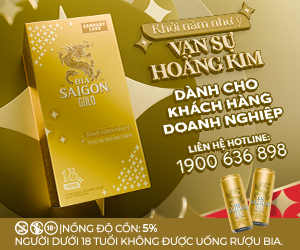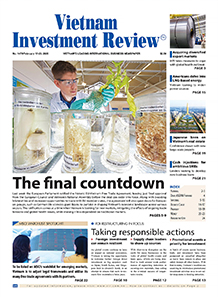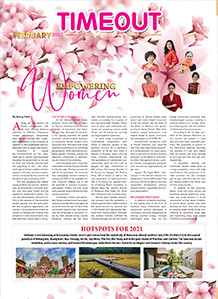Food for thought: finding a niche for Vietnam tourism

PHOTO: AFP Bowls of pho noodle being prepared at Pho Thin Restaurant in Hanoi.
Vietnam has a variety of specialties, including world famous ones like pho and banh mi, but local agencies have failed to make it a niche for the country’s tourism
Over and over again, media reports have also criticised the lack of qualified tour guides and tour operators, as well as the poor capacity of concerned agencies to promote tourism in the country.
These problems have persisted as though they are insoluble.
In the meantime, local authorities keep putting out cheerful statements about how Vietnam’s tourism has done well amidst the world economic downturn, citing an increase of nearly 20 per cent in international arrivals, which crossed six million last year.
But these positive reports have been dismissed by local travel agencies and experts as misleading, inaccurate and incomplete, because the compiled figures are about international arrivals, not tourists.
As the wrangling over problems and figures goes on, it seems to be forgotten that Vietnam’s tourism needs to find its own niche to attract foreign tourists.
In fact, it is probably intimidating and worrying to look at what neighbouring countries have done to successfully boost their tourism industries.
Malaysia, the top destination in Southeast Asia, is reported to have seen an increase of 35 per cent in tourism arrivals, from 11.1 million in 2011 to 15 million last year, thanks to the opening of new attractions, namely international theme park Legoland Malaysia and Johor Premium Outlets.
With the opening of Universal Studios, Marina Bay, and Skypark in recent years, Singapore has also enjoyed an increased influx of tourists. Last year, the largest of its three Gardens by the Bay – a 101-hectare garden complex – was opened to the public and has reportedly wooed more tourists with giant international plant conservatories.
Even Cambodia, which has a lower GDP than Vietnam, has done well with the successful Smile of Angkor show in Siem Reap province. It is now promoting tours around its traditional attractions like Preah Vihear Temple and the ancient town of Oudong, and a new five-star resort has sprung up on the Thansur Bokor Highlands.
Given the tough competition from these capable competitors, what does Vietnam have and what has it done to develop the industry that is a major income earner for the country?
Besides traditional attractions, for many years, we have promoted festivals that have been frequently criticised for wasting lots of money but failing to offer things that are of real tourism value.
Every year, more than 8,000 big and small festivals are held across the country, more than 500 days are marked for celebrations and holidays, and tourism years are organised in various cities and provinces with lots of activities and events.
But, they all end without leaving any impression on tourists.
Many years ago, at a meeting with Vietnamese businesses, world famous marketing professor and consultant Philip Kohler once suggested that Vietnam should build its national brand as “a kitchen of the world.”
In other words, Vietnam’s tourism has a certain edge over other regional countries: food and drink.
However, it is a pity that the local agencies have yet to come up with any effective plan to promote it.
So far, there has been a noticeable effort from Ho Chi Minh City-based Dien Quan Media Company. Early this year it introduced the reality show “Martin Yan – Taste of Vietnam,” in which world-renowned Chef Martin Yan presents specialties across the country over the course of 26 episodes.
But, to make food and drink a real ace for the local tourism industry, much more needs to be done, including bringing out high quality publications on Vietnamese culinary specialties.
The huge funds that are spent on thousands of festivals and hundreds of holiday celebrations every year are more than enough to create effective, lasting promotions for the nation’s cuisine, which has already won international acclaim.
Of course, when and how Vietnam will carve out its potential niche is an open question.
What the stars mean:
★ Poor ★ ★ Promising ★★★ Good ★★★★ Very good ★★★★★ Exceptional
Related Contents
Latest News
More News
- The destinations powering Vietnam’s festive season travel demand (December 04, 2025 | 18:33)
- Vietnam named among the world’s most exciting winter destinations (December 04, 2025 | 15:10)
- Phu Tho emerges as northern Vietnam’s new tourism hub (December 01, 2025 | 17:00)
- Vietjet completes Airbus A320/A321 updates ahead of deadline (December 01, 2025 | 09:49)
- Vietjet resumes Con Dao flights from early December (November 28, 2025 | 15:24)
- Free tickets, Lunar New Year promotions on offer at Vietjet Mega Livestream (November 26, 2025 | 15:32)
- Scandinavian Airlines and Vietnam Airlines broaden agreement with new routes (November 25, 2025 | 17:04)
- Halong Cruise Port welcomes over 3,100 international visitors (November 12, 2025 | 18:06)
- Vietnam.travel climbs to second place in Southeast Asia website rankings (November 12, 2025 | 18:01)
- Cat Ba named among Southeast Asia’s top island adventures (November 11, 2025 | 18:09)

 Tag:
Tag:





















 Mobile Version
Mobile Version